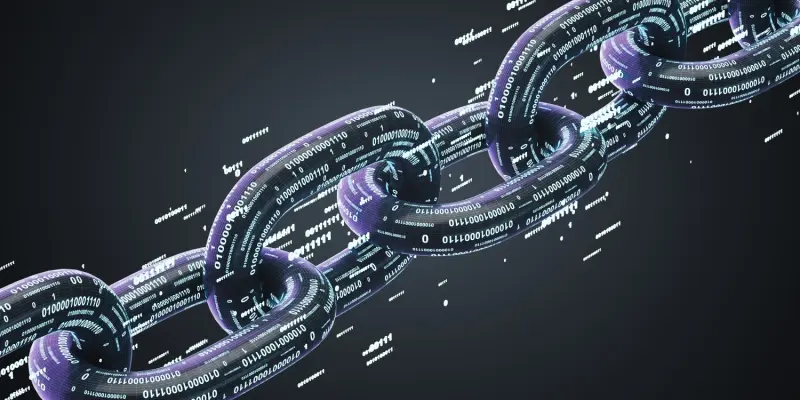As blockchain technology advances, its potential to revolutionize industries and democratize data management becomes increasingly evident. However, this innovative edge often clashes with the stringent data privacy laws of the General Data Protection Regulation (GDPR). The inherent decentralization and immutability of blockchain pose daunting challenges for compliance, sparking an impassioned dialogue between technology advocates and regulatory bodies. Recognizing the critical need for alignment, the European Data Protection Board (EDPB) has stepped forward with proposals that aim to harmonize the two without stifling blockchain’s innovative potential. The EDPB’s guidelines insist on strict adherence to data protection principles, particularly as blockchain becomes integral to personal data handling and storage across global networks. These guidelines serve as a blueprint for companies seeking to navigate the legal complexities that arise from integrating blockchain within GDPR’s framework, highlighting technical solutions and adoption strategies.
Off-Chain Data Storage Solutions
One prominent solution presented by the EDPB involves leveraging off-chain data storage, diverting personal data from the immutable ledger of blockchain itself. By employing sophisticated cryptographic methods, such as encrypted storage, salted hashes, and cryptographic commitments, organizations can safeguard privacy while ensuring data remains secure and tamper-proof. This approach reduces on-chain data footprints, minimizing the risk of exposure while remaining compliant with GDPR’s stringent requirements. Moreover, these techniques help mitigate concerns regarding data traceability, crucial for protecting individual privacy in a rapidly interconnected digital ecosystem. The EDPB stresses that organizations must conduct comprehensive Data Protection Impact Assessments (DPIAs) to assess the necessity and proportionality of blockchain utilization versus other security-focused technologies. These assessments not only evaluate potential risks but also serve as foundational tools in documenting compliance efforts, fostering transparency and accountability in blockchain deployment decisions.
International data transfers represent another significant hurdle in aligning blockchain technology with GDPR, especially in public blockchains where nodes span beyond European boundaries. Addressing this challenge, the EDPB advocates the use of Standard Contractual Clauses, ensuring data transfers comply with GDPR’s Chapter V regulations. These clauses operate as binding agreements safeguarding data flows and guaranteeing that protection measures mirror those within the EU. Simultaneously, the guidelines emphasize the imperative of upholding data subject rights, such as rectification, erasure, and objection to automated decisions, all while adhering to the blockchain’s technical constraints. This delicate balance of privacy and innovation underscores the EDPB’s commitment to enabling technology to thrive responsibly within regulatory confines, prompting companies to advance their data governance strategies accordingly.
Navigating Cryptocurrency Compliance Challenges
Cryptocurrency enterprises face unique challenges in maintaining GDPR compliance within their operations, underscoring the guidelines’ relevance. Noteworthy instances include complications faced by Worldcoin and Crypto.com, additionally highlighting the sector’s vulnerability to GDPR-related scrutiny. For instance, Sam Altman’s Worldcoin experienced prohibitions in Spain due to insufficient user data protection frameworks and a lack of transparent information. This illustrates a broader issue where innovative projects falter under the weight of rigorous GDPR standards when privacy considerations are inadequately prioritized. Similarly, the security breach at Crypto.com posed severe questions regarding its data protection measures, drawing attention to potential gaps in safeguarding user information. Stake.com users reported difficulties in exercising their GDPR rights, further spotlighting compliance struggle areas within the cryptocurrency domain. These cases underscore the critical need for cryptocurrency firms to rigorously assess and fortify their GDPR adherence strategies, setting a precedent for the recent wave of innovative financial technologies.
The EDPB’s guidelines establish crucial benchmarks for responsible blockchain adoption, advocating for company transparency while fostering technological progress. They remind companies that respecting data protection rights is not merely a regulatory obligation but an ethical commitment to end-users. The focus remains on harmonizing technology with law; the dual pursuit of privacy and innovation must be tirelessly pursued to avoid compromising data security. Even as blockchain’s potential continues to captivate industries, regulatory adherence challenges remain resolute, necessitating dedicated solutions that reconcile disparate paradigms. As cryptocurrency entities and tech firms alike confront the reality of compliance, these guidelines provide a comprehensive framework, offering insights into cultivating a future where technology and data protection coexist seamlessly.
Reconciling Privacy and Innovation
As blockchain technology progresses, its capability to transform industries and democratize data management becomes more apparent. However, this innovative advancement often collides with the rigorous data privacy requirements prescribed by the General Data Protection Regulation (GDPR). The core properties of blockchain, such as decentralization and immutability, present significant hurdles to regulatory compliance, thus igniting a spirited debate between tech enthusiasts and regulatory entities. Recognizing the pressing need for synergy, the European Data Protection Board (EDPB) has introduced proposals designed to align the two without dampening blockchain’s inventive edge. The EDPB’s guidelines underscore a steadfast commitment to data protection principles, especially as blockchain increasingly handles and stores personal data on a global scale. These guidelines act as a roadmap for businesses striving to manage the legal intricacies of integrating blockchain within the GDPR framework, showcasing potential technical solutions and strategic adoption methods.

